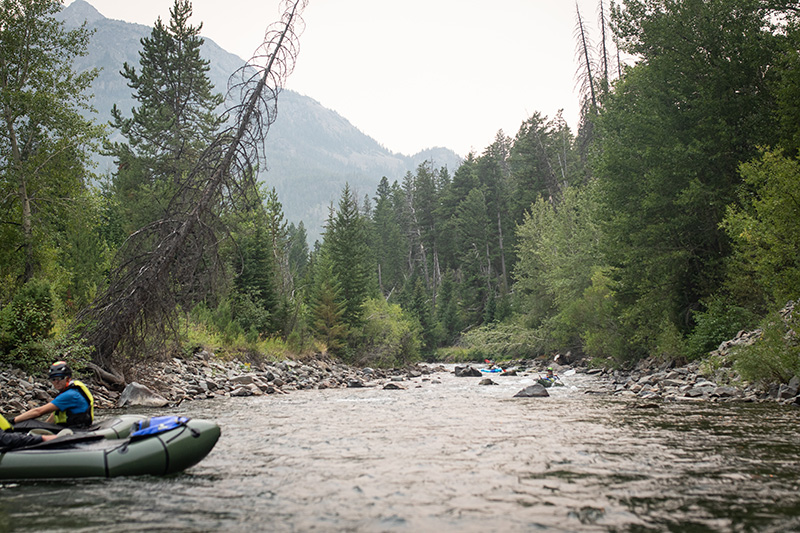WE’RE MORE THAN YELLOWSTONE

Cody, Wyoming
Outside the borders of Yellowstone is where the real adventure begins. While Yellowstone Park consists of roughly 2.2 million acres of pristine northern temperate habitat, the Greater Yellowstone Ecosystem is nearly 22 million acres — expanding far beyond the boundaries of the Park, but encompassing the true essence of the Yellowstone ecosystem. Simply put, the Greater Yellowstone region holds limitless possibilities for exploration and discovery, all without the restrictions and fees associated with a National Park Experience.

Grizzly along the North Fork of the Shoshone. Photo: Rick Blanchard @rickblanchardphoto
*A quick note: Wyoming River Trips LOVES Yellowstone National Park and all that is offers (clean water, fresh air, intact ecosystems, wildlife, and access to public lands and water). We just feel there is so much more to experiencer beyond the Park boundaries.
That’s where Wyoming River Trips comes in. Our river trips offer an immersive experience of The Greater Yellowstone via the rivers that flow out of the heart of the Park itself. The Shoshone River Drainage Basin is part of the upper-most Missouri River Basin, sending water from the heart of the central Rockies to the Gulf of Mexico. The snow that falls throughout the winter and early Spring, feeds the streams and rivers that we run during our trips. That same water fills lakes and reservoirs that provide drinking water, and water to grow food. These ribbons of liquid connect ecosystems and communities throughout the region and are vital to the health and vitality of the Greater Yellowstone.

South Fork of Shoshone River. @wyorivers
The North Fork of the Shoshone originates just outside of the Eastern boundary of Yellowstone National Park, flowing south at first before turning east as it accumulates side-streams on it’s way towards the confluence with the South Fork of the Shoshone (where Buffalo Bill Reservoir now sits). The upper reaches of this river flow through grizzly habitat, elk summer range, and bighorn sheep wintering grounds. The alpine environment of the upper North Fork eventually gives way to the rolling foothills, backdropped by the snow-capped peaks of the Wapiti Valley. Just outside of Cody, the river spills into Buffalo Bill Reservior and combines with the South Fork of the Shoshone, filling the lake before flowing through the Shoshone Canyon.
Below the confluence of the South Fork and North fork, the Shoshone River has cut through a deep granite, the same gorge that Buffalo Bill Dam was built into. From here, the river starts its journey to the Northeast — it winds through limestone, sandstone, siltstones, and clays, deposited 200 – 500 million years ago when this part of the world was routinely underwater within a shallow inland sea. The iron-oxidized sandstone of the Chugwater formation is well-recognized and seen throughout western Wyoming. Within the Shoshone canyon, the red rock of the Chugwater formation is truly a site to see and experience from the river, adding depth and perspective to your time spent in and around Cody.

Red Rock Canyon of the Shoshone. @wyorivertrips
Beyond geology, the natural history of the Shoshone River corridor supports wildlife and fish populations year-round, connecting populations and habitats throughout the eastern edge of the Greater Yellowstone region. Populations include mule deer, coyotes, waterfowl, black bear, mountain lions, and numerous trout species. The river itself is a ribbon of green, made so by the native and non-native plants along it’s banks — providing food and habitat to wildlife and bird species. These corridors are vital to the health and vitality of wildlife species because of the connectivity they provide between different habitat zones throughout the year.
As the river flows downstream, it’s course takes a northern turn towards the Shoshones confluence with the Bighorn River. From it’s ordination point near the eastern boundary of Yellowstone, to it’s terminus at the Gulf of Mexico, the water that flows through the Shoshone river drainage system will have traveled nearly 3,000 miles. Along the way that water will support agriculture, municipalities, as well as power companies and their networks of power users like ourselves. The river is a vital piece of our local and regional economies, as well as a fundamental component to our humanity. Without the water that flows from the high mountains to the ocean, the ribbons of connective habitat and our communities built along those rivers would no longer exist.

Packrafts on The North Fork of the Shoshone. @wyorivers
We love the river and we would love to share our perspective of it with you. So while in Cody, stop by and see us sometime! We would love to show you what lies beyond Yellowstone and it boundaries — the communities, ecologies, and river corridors that extend out from Yellowstone itself and connect all of us. We sure hope to see you out on the water!
Check out our trip offerings here.
